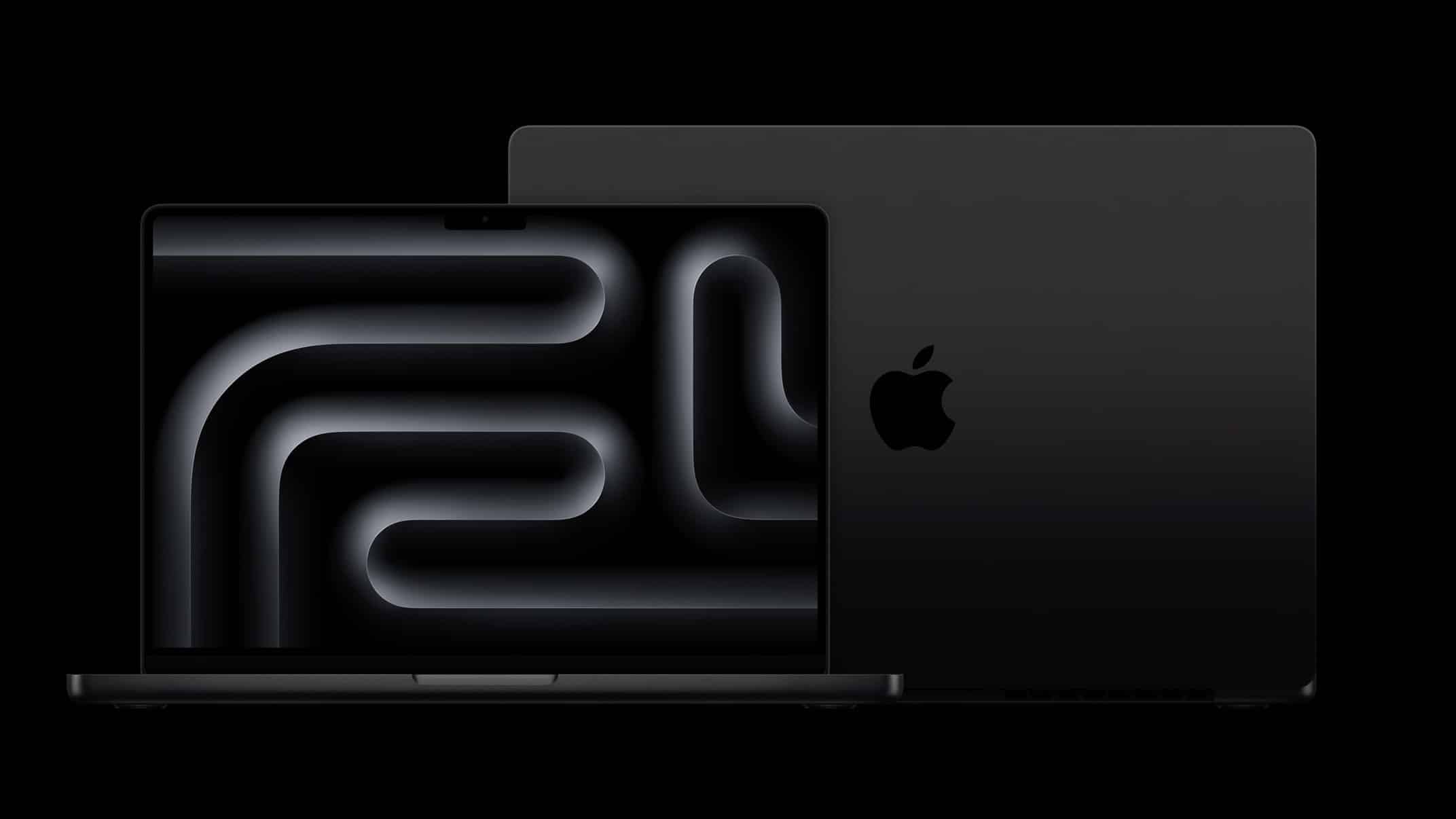
Alongside the unveiling of its new family of M3 chips, Apple unveiled a revamped MacBook Pro lineup during its “Scary Fast” event Monday night.
The new lineup is tiered around the three new M3 chips: M3, M3 Pro, and M3 Max. With the new lineup, Apple has done away with the 13-inch base model from the M1 and M2 generations that started at $1,299, leaving the 14-inch with M3 as the new base model, starting at $1,599.
The next step up are the 14-inch and 16-inch MacBook Pros with M3 Pro, starting at $1,999 and $2,499, respectively. The M3 Max 14-inch and 16-inch models start at $3,199 and $3,499, respectively.
What’s new with the M3 MacBook Pros?
Space Black
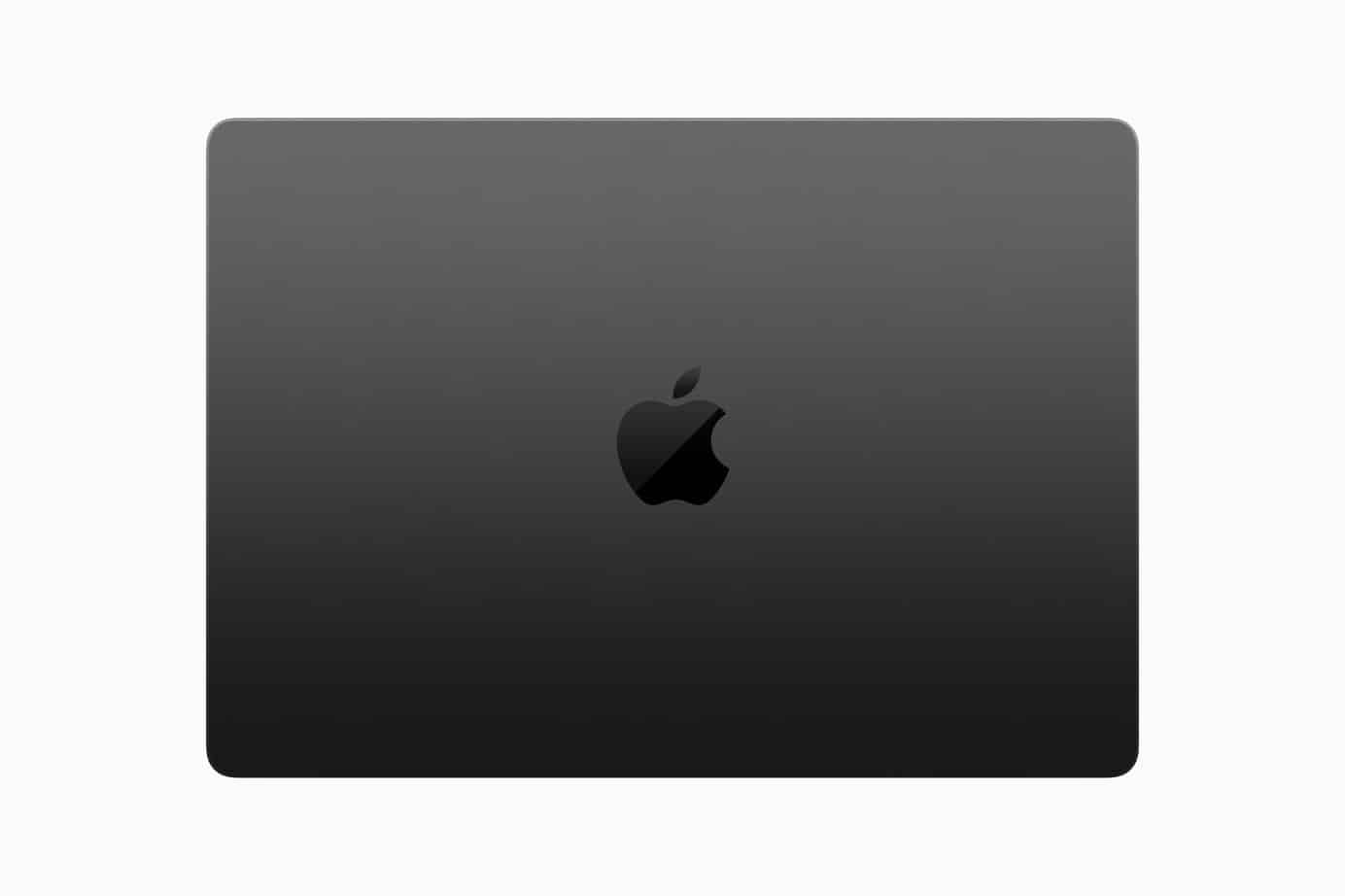
Before we get too far, it’s worth mentioning that Apple is offering some of the new MacBook Pro configurations in a new Space Black color. Apple calls the color “unmistakably pro” and notes that the finish features an anodization seal that will “greatly reduce” fingerprints.
The new Space Black color is only available on MacBook Pros with M3 Pro and M3 Max.
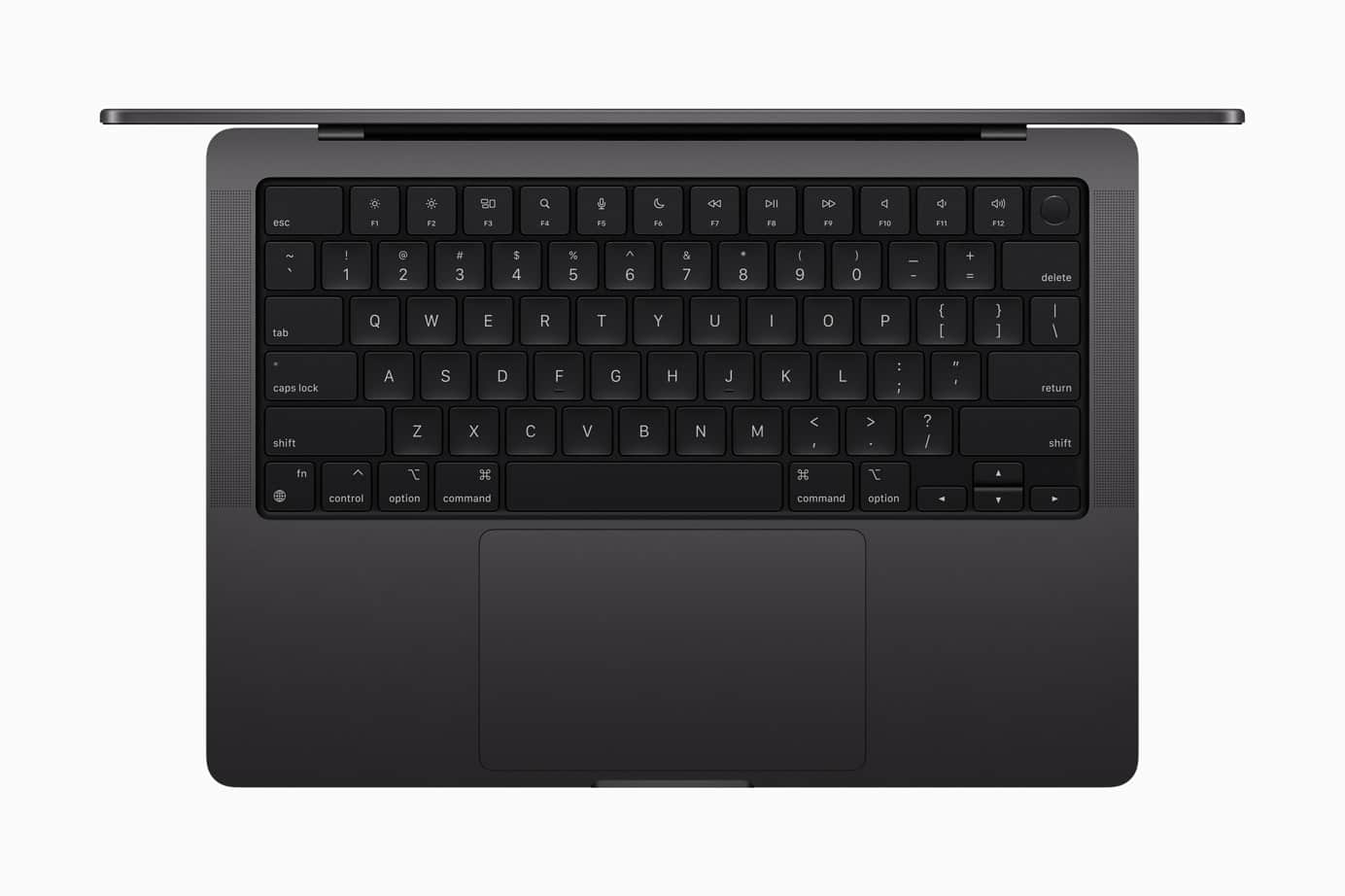
M3 and 3-nanometer
Nearly all of the updates to these new MacBook Pros are related to the M3 family of chips. As we discussed in our full post on the M3 family, these are the first chips created for personal computers using the new 3-nanometer process. This technology allows more transistors to be packed into a smaller space, resulting in improvements to speed and efficiency.
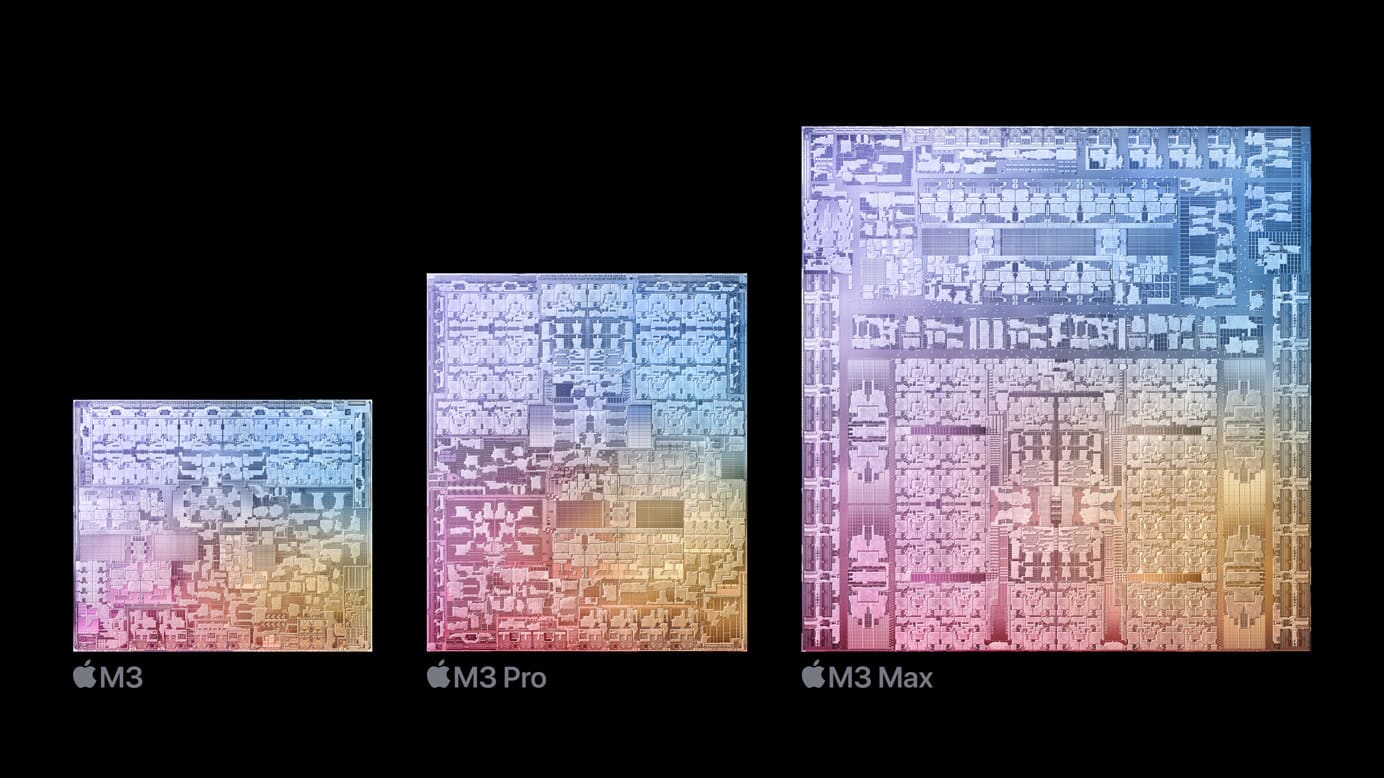
And boy do these chips pack the transistors. M3 has 25 billion transistors, while M3 Pro packs 37 billion. But the M3 Max puts them both to shame with a whopping 92 billion transistors.
For those upgrading to an M3 MacBook Pro from an M1 version, the difference will be dramatic. And if you’re coming from an Intel MacBook Pro…well, prepared to have your mind absolutely blown.
Improved GPU and Dynamic Caching
The big reason a lot of MacBook Pro users might want to pull the trigger on these new M3 models is the improvements Apple has made with the M3 GPU. Apple says the M3 chips “deliver the biggest leap forward in graphics architecture” yet for Apple silicon.
The new GPU “dramatically increases the average utilization of the GPU,” significantly increasing performance in the most demanding apps and games, Apple adds.

It does this through Dynamic Caching. While traditional GPU architecture allocates the same amount of local GPU memory for every task based on the needs of the single most demanding task, the M3 GPU dynamically allocates the exact amount of memory that is needed.
The M3 chip has a 10-core GPU that is up to 65% faster than the M1 GPU. The M3 Pro has a 18-core GPU up to 40% faster than the M1 Pro GPU. And the M3 Max has a 40-core GPU up to 50% faster than the M1 Max GPU.
Up to 128GB of unified RAM and dedicated ProRes engines
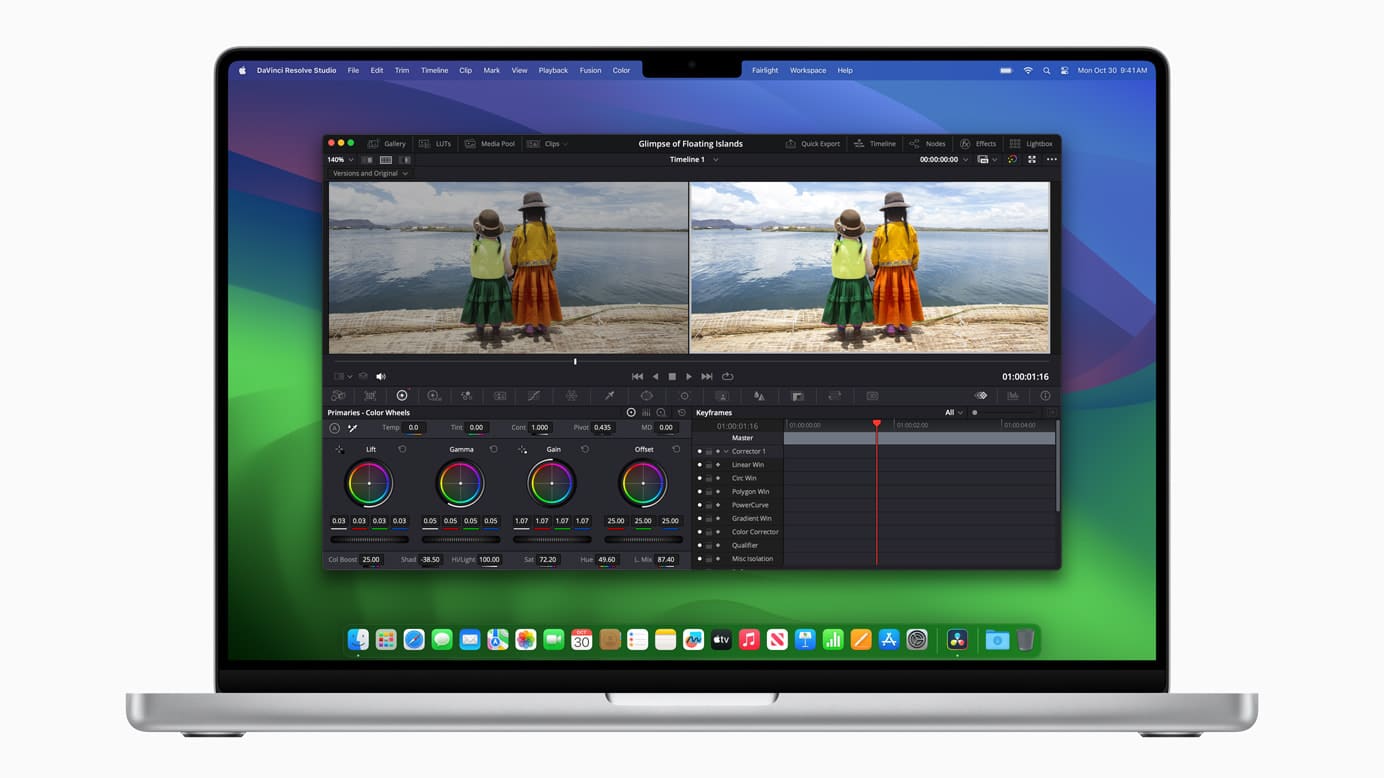
Video professionals will no doubt be drawn to the new M3 Max MacBook Pros. These are the first MacBooks to offer up to 128GB of unified memory. Plus, the M3 Max features two engines dedicated to ProRes encoding. Huge amounts of memory + buttery ProRes + 50% GPU performance gains = a video professional’s dream.
Up to 4 external displays
While M3 Pro and Max models support up to four (4) external displays like their M1 and M2 predecessors, the M3 base supports only 1 display like M1 and M2 models before it.
Thankfully, if you spring for the M3 base model or if you have an M1 or M2 MacBook Pro/MacBook Air, you can get around the limitations of these base chips by connecting a second external display with this adapter.
A note about the base model: 14-inch MacBook Pro with M3 vs. 13-inch MacBook Pro with M1/M2
We noted at the top that as part of this lineup revamp, Apple has done away with the $1,299 13-inch base model MacBook Pro. As it stands, the cheapest MacBook Pro you can get is the $1,599 14-inch model with the M3 chip.
The good news is that with this $300 price bump there are notable performance gains. Apple says the new 14-inch M3 model is 60% faster than the 13-inch MacBook Pro with M1.
A few other performance figures Apple provided:
- Render performance in Final Cut Pro is up to 7.4x faster than the 13-inch MacBook Pro with Core i7, and up to 60 percent faster than the 13‑inch MacBook Pro with M1.
- Code compilation in Xcode is up to 3.7x faster than the 13-inch MacBook Pro with Core i7, and up to 40 percent faster than the 13‑inch MacBook Pro with M1.
- Spreadsheet performance in Microsoft Excel is up to 3.5x faster than the 13‑inch MacBook Pro with Core i7, and up to 40 percent faster than the 13‑inch MacBook Pro with M1.
Pricing and availability
The new M3-generation MacBook Pros are available to order today and will begin arriving to customers and in stores on Tuesday, November 7. Here’s how pricing breaks down:
M3 models
$1,599
- 8-core CPU
- 10-core GPU
- 8GB Unified Memory
- 512GB SSD Storage
- Two Thunderbolt/USB 4 ports, HDMI port, SDXC card slot, headphone jack, MagSafe 3 port
$1,799
- 8-core CPU
- 10-core GPU
- 8GB Unified Memory
- 1TB SSD Storage
- Two Thunderbolt/USB 4 ports, HDMI port, SDXC card slot, headphone jack, MagSafe 3 port
M3 Pro models
14-inch
$1,999
- 11-core CPU
- 14-core GPU
- 18GB Unified Memory
- 512GB SSD Storage
- Three Thunderbolt 4 ports, HDMI port, SDXC card slot, headphone jack, MagSafe 3 port
$2,399
- 12-core CPU
- 18-core GPU
- 18GB Unified Memory
- 1TB SSD Storage
- Three Thunderbolt 4 ports, HDMI port, SDXC card slot, headphone jack, MagSafe 3 port
16-inch
$2,499
- 12-core CPU
- 18-core GPU
- 18GB Unified Memory
- 512GB SSD Storage
- Three Thunderbolt 4 ports, HDMI port, SDXC card slot, headphone jack, MagSafe 3 port
$2,899
- 12-core CPU
- 18-core GPU
- 36GB Unified Memory
- 512GB SSD Storage
- Three Thunderbolt 4 ports, HDMI port, SDXC card slot, headphone jack, MagSafe 3 port
M3 Max models
14-inch
$3,199
- 14-core CPU
- 30-core GPU
- 36GB Unified Memory
- 1TB SSD Storage
- Three Thunderbolt 4 ports, HDMI port, SDXC card slot, headphone jack, MagSafe 3 port
16-inch
$3,499
- 14-core CPU
- 30-core GPU
- 36GB Unified Memory
- 1TB SSD Storage
- Three Thunderbolt 4 ports, HDMI port, SDXC card slot, headphone jack, MagSafe 3 port
$3,999
- 16-core CPU
- 40-core GPU
- 36GB Unified Memory
- 1TB SSD Storage
- Three Thunderbolt 4 ports, HDMI port, SDXC card slot, headphone jack, MagSafe 3 port









I find it interesting that both you and Apple are comparing this new machine against M1 machines rather than M2 machines.